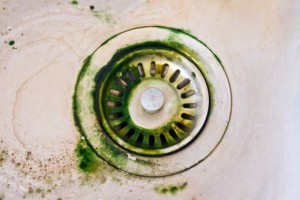Mold Remediation: What to Save and What to Discard
When deciding what to save following mold damage, consider the type of material, the source of moisture, and the value of the item.

Type of Material
Depending on the type of material hosting the mold growth, it may or may not be possible to clean and salvage. Here are the three categories of materials that could have mold growth:
- Non-Porous Materials: Non-porous materials like metal, glass, ceramic tile, and hard plastic can host superficial mold growth, but because of the impermeable nature of the material, mold cannot grow beneath the surface. This means that by cleaning the mold from the surface you can eliminate all the mold.
- Semi-Porous Materials: Materials like unsealed ceramic, wood, plaster, and concrete are semi-porous, meaning water can be slowly absorbed into them, allowing mold to grow inside the material. These kinds of materials can also be cleaned in most cases, but it is important to use the right cleaning solutions that will penetrate the material but not leave subsurface moisture behind that could contribute to future mold growth.
- Porous Materials: Once mold has grown on porous materials like unfinished wood, paper, carpet, wallboard, and insulation, your best bet is to discard these materials. However, porous materials like clothing may be salvaged if they can tolerate a hot wash with bleach.
Source of Moisture
Another very important factor to consider when deciding what to salvage following a mold infestation is the source of the moisture that allowed the mold to develop. If this moisture was contaminated, such as by sewage or by floodwater, you will want to be more aggressive in discarding porous and semi-porous items.
Value of Item
Finally, be sure that any item you want to clean and salvage is worth the cost of the labor and supplies required for the job. In many cases, it is simpler and more cost-effective to discard upholstered furniture, rugs, drapes, etc. rather than have them cleaned.










